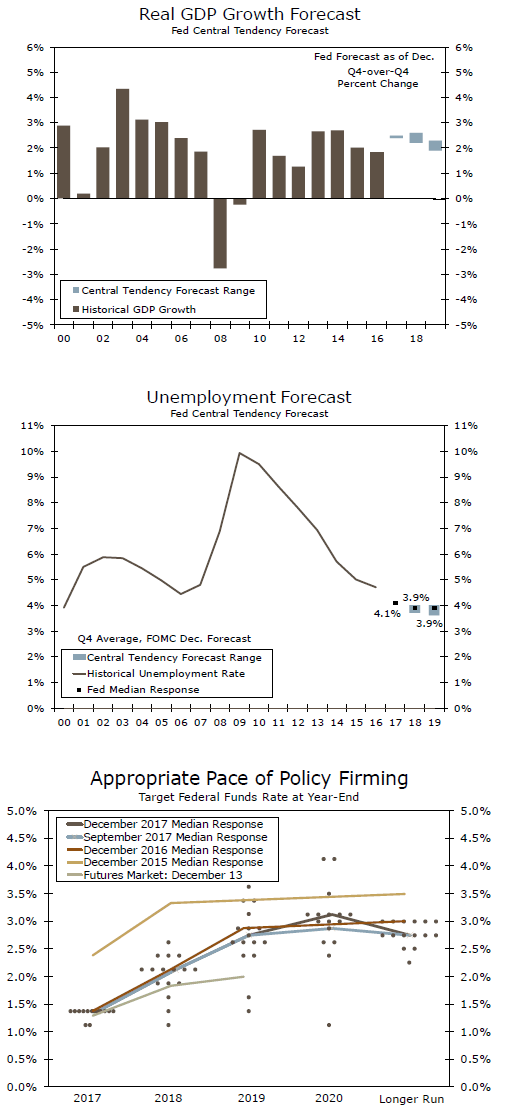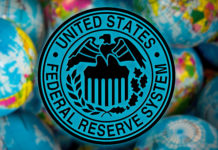The Fed increased the target range for the federal funds rate one-quarter percentage point to 1.25 to 1.50 percent. The Fed also raised its 2018 real GDP growth forecast and lowered its estimate for unemployment.
Surprisingly Few Changes in the Policy Statement
As expected, the Federal Reserve’s Open Market Committee (FOMC) raised the target range for the federal funds rate one quarter percentage point to 1.25-1.50 percent. With the move the Fed has now hiked interest rates three times this past year and five times since they started to raise interest rates at the tail end of 2015.
The policy statement contained relatively few changes from the prior meeting. Most of the changes remove language relating to the impact of the hurricanes on the employment and inflation data. The new statement indicates that the bulk of those impacts have passed and will not materially impact the economic outlook. Monetary policy is seen as remaining accommodative and consistent with strong labor market conditions and a sustained return to 2 percent inflation.
But More Nuanced Changes in the Economic Outlook
While the policy statement did not change materially, the forecast for real GDP growth has been raised significantly. The median forecast for 2018 real GDP growth is now seen at 2.5 percent, up from 2.1 percent at the September meeting. The unemployment rate is now seen at falling below 4 percent in 2018 and 2019 but only modestly so, with the median estimate for the unemployment rate at 3.9 percent for both years. Inflation expectations are largely unchanged from the September forecast. Both the overall and core PCE deflator are expected to rise 1.9 percent in 2018.
The range of economic forecasts varies considerably, possibly reflecting some disagreement about the likely impact of tax reform. The central tendency for 2018 real GDP growth was increased to 2.2-2.6 percent from 2.0-2.3 percent in September. The range of forecasts for 2018 real GDP growth extends all the way up to 2.8 percent. The central tendency for forecasts for the unemployment rate fell to 3.7-4.0 percent, compared to 4.0-4.2 percent in September.
The Fed’s projections for the federal funds rate changed only slightly. The median forecast calls for three rate hikes in 2018, two in 2019 and two more in 2020. Estimates for the long-term federal funds rates were slightly lowered and the range of outcomes are now entirely at 3 percent or less.
Takeaways
Janet Yellen’s last meeting as Fed chair was fairly ordinary. There is little sense monetary policy is about to deviate from the measured pace maintained the past few years. As a result there was little noticeable market response. We expect the Federal Reserve to raise the federal funds rate three times in 2018. The Fed’s forecast for growth and inflation is roughly consistent with our own and more rate hikes would only be justified if growth accelerated in a way that would push inflation unacceptably higher.














